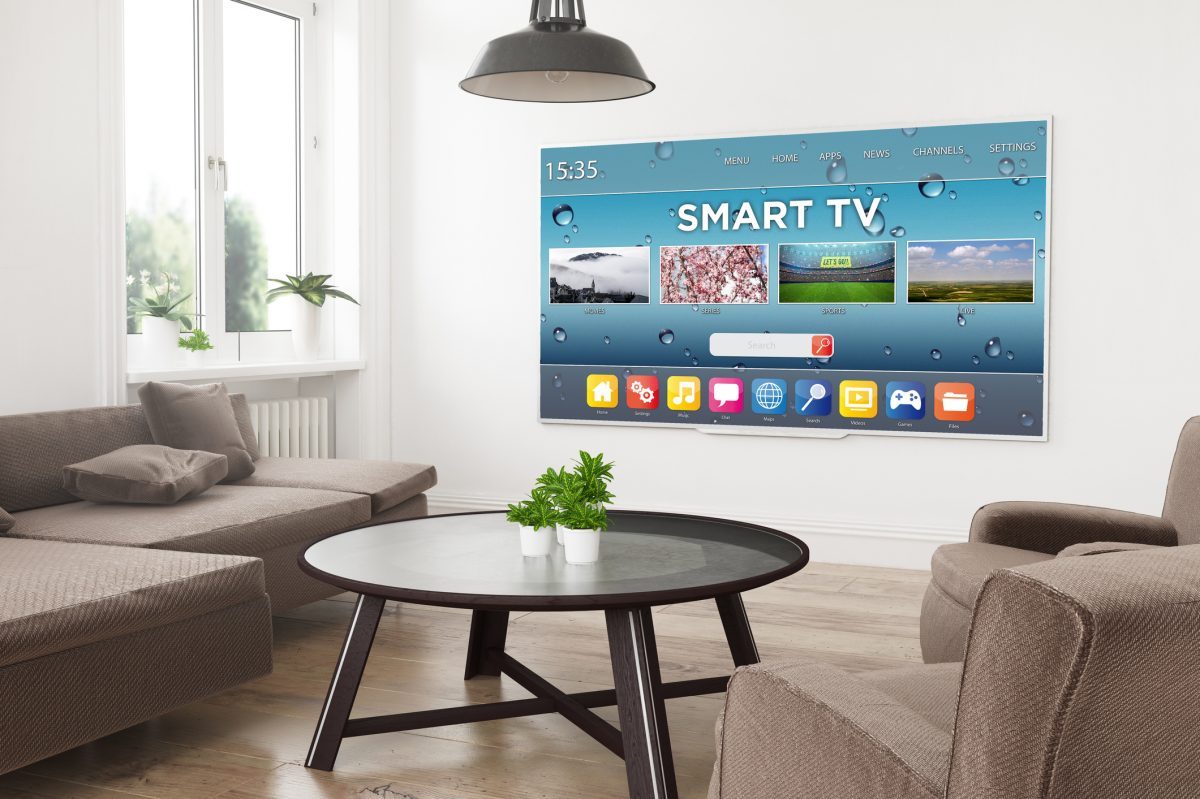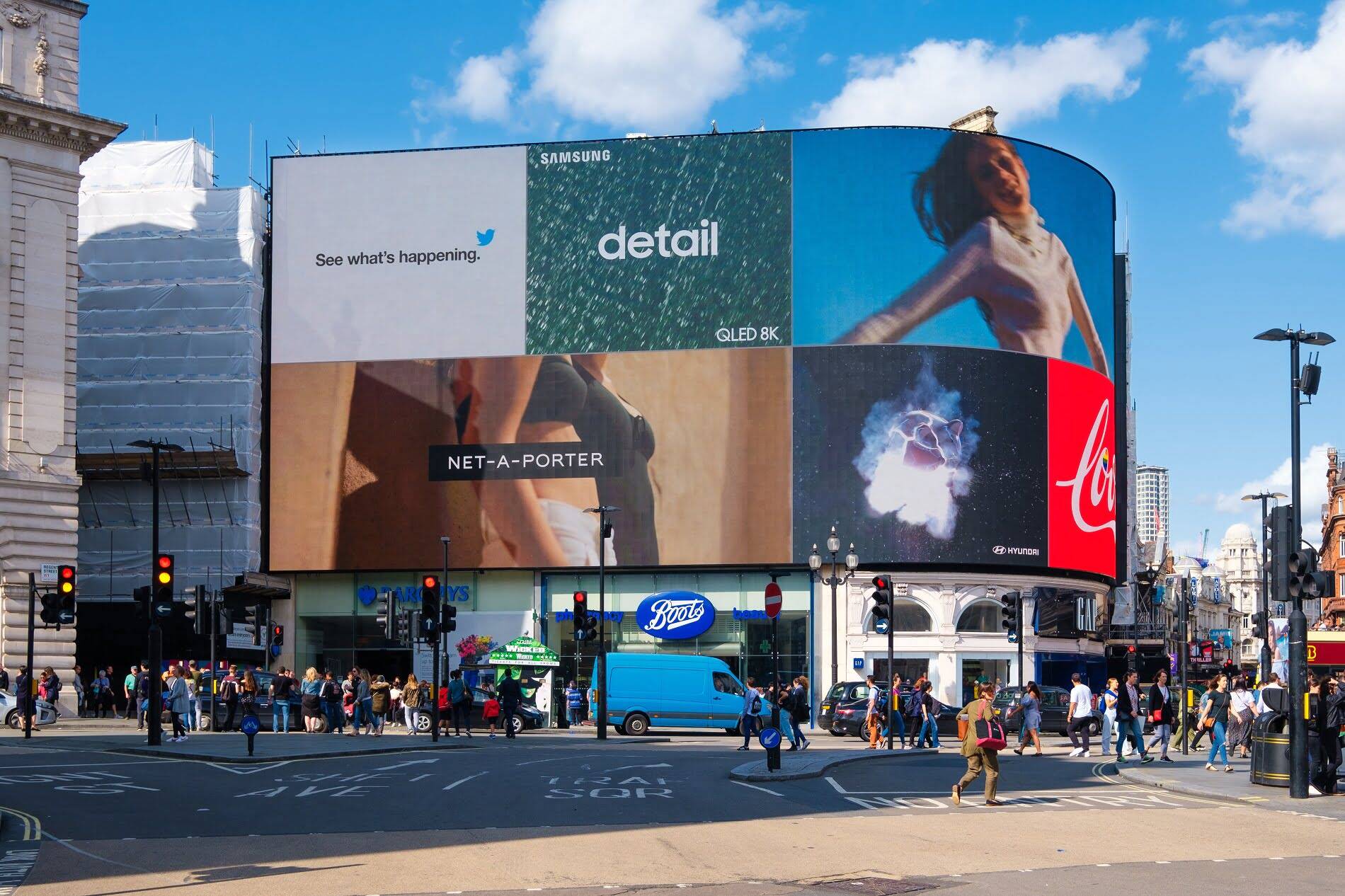Home>Technology>Home Entertainment Systems>Why Might Digital Media Be More Effective Than Television Ads?


Home Entertainment Systems
Why Might Digital Media Be More Effective Than Television Ads?
Modified: January 5, 2024
Discover why home entertainment systems are turning to digital media for more effective advertising over traditional television ads. Explore the benefits and impact of this shift in consumer engagement.
(Many of the links in this article redirect to a specific reviewed product. Your purchase of these products through affiliate links helps to generate commission for Storables.com, at no extra cost. Learn more)
Introduction
In today's digital age, the landscape of advertising has undergone a significant transformation. With the rise of digital media, particularly through online platforms and mobile devices, the effectiveness of traditional television ads has been called into question. This shift has sparked a debate over which medium offers the most impactful and cost-effective means of reaching target audiences.
As consumers increasingly turn to digital channels for entertainment and information, advertisers are presented with new opportunities to engage with their target demographics. The ability to tailor content to specific interests and demographics, coupled with the potential for interactive engagement, has positioned digital media as a formidable contender in the advertising arena.
In this article, we will explore the reasons why digital media may be more effective than television ads, delving into the aspects of target audience reach, cost-effectiveness, interactivity and engagement, data and analytics, as well as flexibility and customization. By examining these factors, we aim to provide a comprehensive understanding of the advantages that digital media offers to advertisers in today's dynamic and ever-evolving marketing landscape.
Key Takeaways:
- Digital media allows advertisers to reach specific audiences accurately and interactively, unlike traditional TV ads, offering cost-effective and flexible options for impactful engagement.
- With digital media, advertisers can gather precise data, optimize campaigns in real time, and create personalized experiences, surpassing the limitations of traditional TV advertising.
Target Audience Reach
One of the key advantages of digital media over traditional television ads lies in its unparalleled ability to reach specific target audiences. Unlike television, which broadcasts content to a broad and diverse viewership, digital platforms allow advertisers to precisely target their desired demographics. Through data-driven strategies, such as behavioral targeting and geotargeting, digital ads can be tailored to reach individuals based on their interests, online behaviors, and even their physical location.
Furthermore, the ubiquitous nature of digital devices ensures that ads can reach audiences at any time and in any location, transcending the constraints of traditional television schedules. With the proliferation of smartphones, tablets, and internet-connected devices, consumers are constantly connected to digital channels, providing advertisers with a continuous and pervasive means of reaching their target demographics.
Moreover, the interactive nature of digital media facilitates personalized and engaging experiences for users, allowing advertisers to create tailored content that resonates with specific audience segments. By leveraging social media platforms, search engines, and other digital channels, advertisers can engage in two-way communication with their target audience, fostering brand loyalty and deeper connections.
Ultimately, the precision, ubiquity, and interactivity of digital media enable advertisers to reach their target audiences with unprecedented accuracy and impact, offering a level of specificity and engagement that traditional television ads struggle to match.
Cost-Effectiveness
When comparing digital media to traditional television ads, one cannot overlook the significant cost-effectiveness that digital advertising offers. Digital platforms provide a range of budget-friendly options, allowing advertisers to allocate their resources with precision and flexibility. Unlike television ads, which often require substantial financial investment for airtime and production, digital media presents a more accessible entry point for advertisers of all scales.
Furthermore, the pay-per-click (PPC) model, commonly used in digital advertising, ensures that advertisers only pay when their ads are interacted with, such as when a user clicks on an ad or takes a specific action. This results in a more efficient allocation of advertising funds, as advertisers are charged based on the actual engagement generated by their campaigns, rather than a flat fee for ad placement, as is common with television ads.
Additionally, the granular targeting capabilities of digital media contribute to its cost-effectiveness by ensuring that ad spend is directed towards the most relevant and receptive audiences. Through data analysis and audience segmentation, advertisers can optimize their campaigns to specifically target those who are most likely to convert, thereby maximizing the return on investment (ROI) for their advertising expenditure.
Moreover, the ability to track and measure the performance of digital ads in real time allows advertisers to make data-driven adjustments to their campaigns, optimizing their strategies for maximum impact. This level of transparency and adaptability empowers advertisers to refine their approach continuously, ensuring that their resources are utilized efficiently and effectively.
Overall, the cost-effectiveness of digital media, combined with its targeted approach and real-time performance tracking, positions it as a compelling choice for advertisers seeking to maximize the efficiency of their advertising budgets while achieving tangible results.
Interactivity and Engagement
One of the defining strengths of digital media, in contrast to traditional television ads, is its capacity for interactivity and heightened engagement with audiences. Digital platforms offer a dynamic and immersive advertising environment, allowing users to interact with ad content in ways that transcend the passive viewing experience associated with television ads.
Interactive ad formats, such as quizzes, polls, games, and immersive multimedia experiences, enable advertisers to captivate and involve audiences in a more participatory manner. By integrating interactive elements into their campaigns, advertisers can create memorable and personalized brand experiences that resonate with consumers on a deeper level.
Moreover, the social nature of digital media fosters a sense of community and dialogue around ad content. Through social sharing, comments, and user-generated content, digital ads have the potential to spark conversations and viral engagement, amplifying their impact far beyond the initial audience reach. This organic amplification of ad content through social channels can significantly enhance brand visibility and resonance, a dimension that traditional television ads struggle to replicate.
Furthermore, the seamless integration of e-commerce and call-to-action mechanisms within digital ads empowers users to take immediate and direct steps, such as making a purchase, signing up for a service, or engaging with additional content. This frictionless transition from ad engagement to action amplifies the effectiveness of digital advertising, driving tangible results and conversions in real time.
Ultimately, the interactive and engaging nature of digital media not only captivates audiences in the moment but also cultivates lasting brand connections and advocacy. By facilitating meaningful interactions and experiences, digital ads have the potential to forge deep emotional connections with consumers, fostering brand loyalty and advocacy in ways that transcend the reach of traditional television ads.
Digital media can be more effective than television ads because it allows for more targeted and personalized advertising, real-time engagement with audiences, and the ability to track and measure the success of campaigns more accurately.
Data and Analytics
One of the compelling advantages of digital media over traditional television ads lies in its robust data and analytics capabilities, which provide advertisers with invaluable insights into ad performance and audience behavior. Digital platforms offer a wealth of data-driven tools that empower advertisers to measure, analyze, and optimize their campaigns with a level of precision and granularity that traditional television advertising cannot match.
Through advanced analytics and tracking technologies, advertisers can gain deep visibility into various performance metrics, including impressions, clicks, conversions, engagement rates, and demographic insights. This wealth of data enables advertisers to understand the nuanced behaviors and preferences of their target audiences, informing strategic decisions and campaign refinements.
Additionally, the real-time nature of digital analytics allows advertisers to monitor campaign performance as it unfolds, making timely adjustments to optimize their strategies and maximize impact. This agility and responsiveness ensure that ad campaigns remain adaptive and finely tuned to capitalize on emerging trends and audience dynamics.
Furthermore, the integration of data-driven targeting and personalization enables advertisers to deliver tailored ad experiences based on user preferences, behaviors, and past interactions. By leveraging data insights, advertisers can create hyper-targeted campaigns that resonate with specific audience segments, driving higher engagement and conversion rates.
Moreover, the attribution modeling capabilities of digital media provide advertisers with a clear understanding of the customer journey, from initial ad exposure to conversion. This visibility into the effectiveness of various touchpoints allows advertisers to allocate their resources strategically, optimizing their ad spend and maximizing the impact of their campaigns.
Ultimately, the data and analytics infrastructure of digital media equips advertisers with the tools to refine their targeting, optimize their creative strategies, and measure the tangible impact of their campaigns with unprecedented precision. This data-driven approach empowers advertisers to make informed decisions and continuously enhance the effectiveness of their advertising efforts, setting digital media apart as a powerful and insightful advertising platform.
Read more: Why Is Television Advertising Effective
Flexibility and Customization
One of the standout advantages of digital media over traditional television ads is its unparalleled flexibility and capacity for customization. Digital platforms offer advertisers a dynamic and adaptable environment in which to tailor their campaigns to specific objectives, target audiences, and market dynamics.
Unlike the fixed constraints of television advertising, digital media allows for agile adjustments to ad content, targeting parameters, and budget allocations in real time. This flexibility enables advertisers to respond swiftly to market shifts, consumer trends, and campaign performance, optimizing their strategies for maximum impact.
Furthermore, the diverse array of ad formats and placement options available in digital media provides advertisers with a rich palette of creative possibilities. From display ads and video ads to native advertising and sponsored content, digital platforms offer a spectrum of formats through which advertisers can craft compelling and contextually relevant ad experiences.
Moreover, the ability to A/B test ad variations and creative elements empowers advertisers to refine their messaging and visuals based on real-time feedback and performance data. This iterative approach to campaign optimization ensures that ad content is continuously honed to resonate with target audiences and drive meaningful engagement.
Additionally, the customization capabilities of digital media extend to audience targeting, allowing advertisers to segment and reach specific demographics with precision. Whether based on demographic attributes, browsing behaviors, or contextual relevance, digital platforms offer a wealth of targeting options that enable advertisers to tailor their messaging to the most receptive audience segments.
Ultimately, the flexibility and customization afforded by digital media empower advertisers to adapt and refine their campaigns with agility and precision, ensuring that their ad content remains relevant, resonant, and impactful in a rapidly evolving digital landscape.
Conclusion
In the dynamic and ever-evolving realm of advertising, the rise of digital media has reshaped the landscape, offering advertisers a host of advantages over traditional television ads. From its precision in targeting specific audience segments to its cost-effectiveness and interactivity, digital media has emerged as a formidable force in the realm of advertising, presenting compelling opportunities for brands to engage with their audiences in meaningful and impactful ways.
The ability of digital media to reach specific target audiences with unparalleled accuracy and granularity sets it apart from the broad and indiscriminate reach of traditional television ads. By leveraging data-driven strategies and interactive ad formats, advertisers can create personalized and engaging experiences that resonate with consumers on a deeper level, fostering lasting connections and brand advocacy.
Moreover, the cost-effectiveness and flexibility of digital media offer advertisers a versatile and adaptable platform through which to optimize their campaigns for maximum impact. The real-time data and analytics capabilities of digital media provide advertisers with invaluable insights into campaign performance and audience behavior, empowering them to make informed decisions and refine their strategies with precision and agility.
Ultimately, the advantages of digital media, including its interactivity, data-driven precision, and customization, position it as a compelling choice for advertisers seeking to navigate the complexities of the modern marketing landscape. While traditional television ads continue to hold relevance in certain contexts, the dynamic and immersive nature of digital media offers advertisers a potent arsenal of tools to engage, resonate, and drive meaningful outcomes with their target audiences.
As the advertising landscape continues to evolve, the ascendancy of digital media stands as a testament to its transformative power, providing advertisers with a rich tapestry of opportunities to connect, captivate, and inspire audiences in ways that transcend the limitations of traditional television advertising.
Frequently Asked Questions about Why Might Digital Media Be More Effective Than Television Ads?
Was this page helpful?
At Storables.com, we guarantee accurate and reliable information. Our content, validated by Expert Board Contributors, is crafted following stringent Editorial Policies. We're committed to providing you with well-researched, expert-backed insights for all your informational needs.















0 thoughts on “Why Might Digital Media Be More Effective Than Television Ads?”